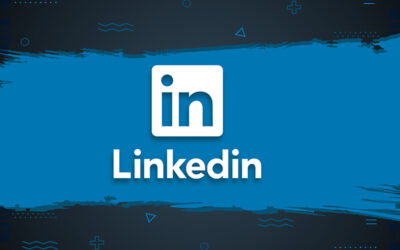This is the age of outsourcing and though the COVID-19 pandemic affected the outsourcing industry, the presence of remote communication and work technologies has ensured that outsourcing goes ahead stronger into the future. Data conversion services are among the outsourced solutions commonly used.
Remote Workplaces Are Here to Stay
Remote workplaces are getting more popular, whether COVID-19 continues or not. With the increasing challenges in the supply chain movement and resource gathering that the pandemic and other potential future crises could bring about, cost saving is critical. Outsourcing helps save costs and compensate for the shortage of resources as well as a potential reduction in workforce.
The Various Models of Outsourcing
Over the decades, outsourcing has branched out to various models. Using the right model for your company, the one that’s most appropriate for the needs of your organization, is absolutely essential to truly benefit from the arrangement.
When it comes to outsourcing, you usually have three major models available:
- You can outsource specialists and temporarily add them to your payroll till the task is over. This is the staff augmentation model.
- The managed team model involves hiring a whole team rather than just individuals. The team also does not work in-house but reports to either a project manager or the client directly.
- The project-based model is what usually comes to mind though, when you think of outsourcing. This includes delegating an outsourcing company with the responsibilities involved.
Assuming the project-based model is what you are looking for, which indeed ranks high in terms of efficiency and cost-effectiveness, let’s examine the things you need to consider before selecting the right provider and model.
The Big Task of Selecting the Right Outsourcing Model
Defining Core and Non-core Areas of Your Business
Before you select the provider, you need to decide the areas of non-core business to outsource:
- Are you looking for comprehensive outsourcing or just departmental outsourcing focusing on certain aspects of your business?
- You need to define the core and non-core aspects of your business.
Back office processes, customer care, accounting and finance are usually categorized under non-core responsibilities. Any area you don’t wish to hand over to a third party becomes a core task. There is the captive outsourcing model available for this, where you still retain control over the processes despite getting the services outsourced.
Cost Versus Benefits Ratio
The cost versus benefits ratio needs to be worked out here.
- Departmental or piecemeal outsourcing would definitely cost lower than comprehensive outsourcing, but does that necessarily mean it is better for your business?
- Will you be able to flawlessly incorporate the outsourcing arrangement with the other areas of your organization and improve efficiency?
- Or do the benefits and potential productivity gains of comprehensive outsourcing outweigh the greater costs?
Need for Flexibility in Business Control
The next factor to consider is business control. You may need a bit of flexibility here. Many outsourcing models are quite strict in this, reducing the level of flexibility businesses have. You need to select the outsourcing arrangement that gives you greater control over the functioning. Flexibility is key, particularly in process and documentation.
Efficiency in Financial Management
Financial management is a critical aspect of running your business and also an important legal requirement. The outsourcing provider therefore needs to be quite efficient in this.
How the Outsourcing Provider Facilitates Performance Evaluation
That’s where we come to reporting and performance evaluation. There are many aspects to consider here:
- How can and how often can you measure the performance of the outsourcing partner? Is it through monthly meetings? Do you prefer meeting more frequently to discuss performance?
- Does the outsourcing provider provide an online portal to view performance? That ensures greater transparency, without you having to set apart staff and resources just to measure the impact of the outsourcing provider’s services.
Captive outsourcing models may not have such portals or monthly meetings though. Your business would have to manually measure the provider’s performance.
Incentives and Penalties
Other clauses in the contract could include incentives or penalties with regard to performance or the lack of it. Incentives motivate the provider to perform better, while penalties punish the provider for not meeting performance expectations. It’s up to you to decide whether to include this system, though it can be actually beneficial by making your outsourcing partner strive to perform better.
An Outsourcing Model with the Benchmarking Clause
There is also the benchmarking clause offered in some outsourcing contracts, whereby the client company can demand changes to the services offered depending on the latest market developments. The clause also enables your business to demand the application of new pricing models and cost structures. This may be absent in captive models.
Onshore and Offshore Outsourcing
Finally, you can choose between onshore and offshore outsourcing. In onshore outsourcing, the outsourcing partner has staff in the client business’ country where it runs its operations. An offshore outsourcing company has its staff placed abroad in countries where labor is cheaper and human resources are greater. Does that make a difference to the end result for your business? It does, if cost-effectiveness is important to you, which is one of the major factors for outsourcing anyway.
Offshore outsourcing is where operations take place in countries with cheaper labor. You get to enjoy the company’s services for a much lower rate than with onshore outsourcing. You may worry about communication and management, particularly with differences in time zones, but an efficient outsourcing provider provides a Project Manager to handle efficient communication, management and performance assessment. The offshore team also works according to the client’s time zone. Your business liaisons through the outsourcing provider, so you don’t need to worry about communication or any of the other aspects involved.
Taking time and effort along with brainstorming sessions with the concerned departments of your business can go a long way in ensuring you are associating with the right provider. Experienced data conversion companies as well as comprehensive back office service providers are around, that can help your business move forward cost-effectively. It all starts with knowing what your business actually needs.




